Related Research Articles

The Kingdom of Judah was a Semitic-speaking kingdom of the Southern Levant during the Iron Age. Centered in the highlands of Judea, the landlocked kingdom's capital was Jerusalem. Jews are named after Judah and are primarily descended from it.

The City of David, known locally mostly as Wadi Hilweh, is the name given to an archaeological site considered by most scholars to be the original settlement core of Jerusalem during the Bronze and Iron Ages. It is situated on southern part of the eastern ridge of ancient Jerusalem, west of the Kidron Valley and east of the Tyropoeon Valley, to the immediate south of the Temple Mount.
The historicity of the Bible is the question of the Bible's relationship to history—covering not just the Bible's acceptability as history but also the ability to understand the literary forms of biblical narrative. One can extend biblical historicity to the evaluation of whether or not the Christian New Testament is an accurate record of the historical Jesus and of the Apostolic Age. This tends to vary depending upon the opinion of the scholar.

The archaeology of Israel is the study of the archaeology of the present-day Israel, stretching from prehistory through three millennia of documented history. The ancient Land of Israel was a geographical bridge between the political and cultural centers of Mesopotamia and Egypt.
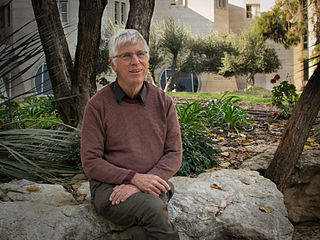
Amihai "Ami" Mazar is an Israeli archaeologist. Born in Haifa, Israel, he has been since 1994 a professor at the Institute of Archaeology of the Hebrew University of Jerusalem, holding the Eleazer Sukenik Chair in the Archaeology of Israel.

Israel Finkelstein is an Israeli archaeologist, professor emeritus at Tel Aviv University and the head of the School of Archaeology and Maritime Cultures at the University of Haifa. Finkelstein is active in the archaeology of the Levant and is an applicant of archaeological data in reconstructing biblical history. He is also known for applying the exact and life sciences in archaeological and historical reconstruction. Finkelstein is the current excavator of Megiddo, a key site for the study of the Bronze and Iron Ages in the Levant.

Benjamin Mazar was a pioneering Israeli historian, recognized as the "dean" of biblical archaeologists. He shared the national passion for the archaeology of Israel that also attracts considerable international interest due to the region's biblical links. He is known for his excavations at the most significant biblical site in Israel: south and south west of the Temple Mount in Jerusalem. In 1932 he conducted the first archaeological excavation under Jewish auspices in Israel at Beit She'arim and in 1948 was the first archaeologist to receive a permit granted by the new State of Israel. Mazar was trained as an Assyriologist and was an expert on biblical history, authoring more than 100 publications on the subject. He developed the field of historical geography of Israel. For decades he served as the chairman of the Israel Exploration Society and of the Archaeological Council of Israel. Between 1951 and 1977, Mazar served as Professor of Biblical History and Archaeology at the Hebrew University of Jerusalem. In 1952 he became Rector of the university and later its president for eight years commencing in 1953.

Biblical archaeology is an academic school and a subset of Biblical studies and Levantine archaeology. Biblical archaeology studies archaeological sites from the Ancient Near East and especially the Holy Land, from biblical times.

Deuteronomistic history of the Hebrew Bible describes a United Monarchy or United Kingdom of Israel existing under the reigns of Saul, David, and Solomon, encompassing the territories of both the later kingdoms of Judah and Israel.

The Large Stone Structure is the name given to a set of remains interpreted by the excavator, Israeli archaeologist Eilat Mazar, as being part of a single large public building in the City of David, presumably the oldest settlement core of Jerusalem. Mazar tentatively dated the findings to the tenth to ninth century BCE. Mazar chose this particular name for the alleged structure because of its proximity to another site known as the Stepped Stone Structure. Mazar announced the discovery on 4 August 2005, and stated that she believed it may be the remains of King David's palace as recorded in the Books of Samuel. The interpretation of the remains as those of one single building, the suggested date, and the association with King David have all been challenged by other well-known archaeologists. The archaeological dig was funded privately by Roger Hertog, an American banker.

Eilat Mazar was an Israeli archaeologist. She specialized in Jerusalem and Phoenician archaeology. She was also a key person in Biblical archaeology noted for her discovery of the Large Stone Structure, which she surmised to be the palace of King David.

Gath or Gat was one of the five cities of the Philistine pentapolis during the Iron Age. It was located in northeastern Philistia, close to the border with Judah. Gath is often mentioned in the Hebrew Bible and its existence is confirmed by Egyptian inscriptions. Already of significance during the Bronze Age, the city is believed to be mentioned in the El-Amarna letters as Gimti/Gintu, ruled by the two Shuwardata and 'Abdi-Ashtarti. Another Gath, known as Ginti-kirmil also appears in the Amarna letters.

Shemuel Yeivin, also spelled Shmuel, was an Israeli archaeologist and the first director of the Israel Antiquities Authority.
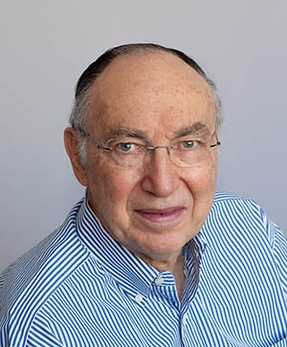
Hershel Shanks was an American lawyer and amateur biblical archaeologist who was the founder and long-time editor of the Biblical Archaeology Review.
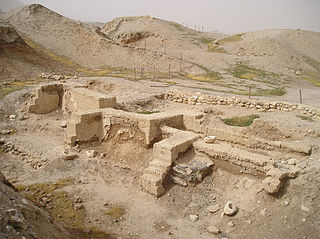
Levantine archaeology is the archaeological study of the Levant. It is also known as Syro-Palestinian archaeology or Palestinian archaeology. Besides its importance to the discipline of Biblical archaeology, the Levant is highly important when forming an understanding of the history of the earliest peoples of the Stone Age.
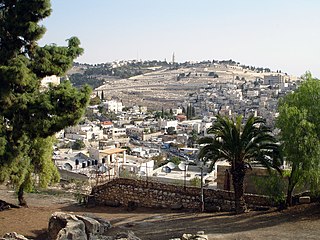
Ophel, also Graecised to ophlas, is the biblical term given to a certain part of a settlement or city that is elevated from its surroundings, and probably means fortified hill or risen area. In the Hebrew Bible, the term is used in reference to two cities: Jerusalem, as in the Book of Chronicles and Book of Nehemiah, and Samaria, mentioned in the Books of Kings. The Mesha Stele, written in Moabite, a Canaanite language closely related to Biblical Hebrew, is the only extra-biblical source using the word, also in connection to a fortified place.
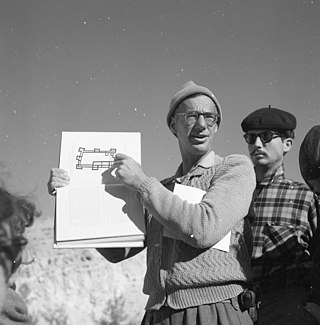
Yohanan Aharoni was an Israeli archaeologist and historical geographer, chairman of the Department of Near East Studies and chairman of the Institute of Archaeology at Tel-Aviv University.
Jerusalem Christian Review is a newspaper for Christians published in Jerusalem.
Dr. Michael Avi-Yonah was an Israeli archaeologist and historian. During his career he was a Professor of Archaeology at the Hebrew University of Jerusalem and served as secretary of Israel's Department of Antiquities.

Khirbet et-Tibbâneh (Arabic: خربة التبانة), sometimes referred to by historical geographers as the Timnah of Judah, is a small ruin situated on a high ridge in the Judaean mountains, in the Sansan Nature Reserve, 622 metres (2,041 ft) above sea level, about 3 kilometers east of Aviezer and ca. 7 kilometers southeast of Bayt Nattif.
References
- ↑ International Publishing Company J-M: http://www.mbendi.com/orgs/1416/e846.htm http://www.jewishusedbooks.com/prodview.asp?idProduct=42239
- ↑ Views of the Biblical World: http://www.onenewspage.com/news/Press+Releases/20110722/24229970/Dan-Mazar-Named-To-Chair-Reprint-of-Historic.htm https://www.amazon.com/Views-Biblical-World-Editorial-Avi-Yonah/product-reviews/B0014NFES0
- ↑ Benjamin Mazar and Dan Mazar: https://www.nytimes.com/1995/09/11/obituaries/benjamin-mazar-89-israeli-biblical-archaeologist.html http://www.briefingwire.com/pr/dan-mazar-named-to-head-historic-bible-book-release